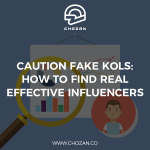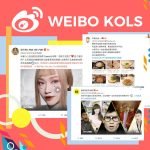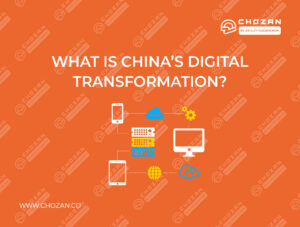Collaborating with KOLs is a relatively nascent medium and the expertise of ‘how to work’ with these influencers is still developing in both the supply and demand sides. KOL marketing is neither a fad nor a dying niche and is very much here to stay — and only growing.
Here are six principles for luxury brands who expect to maximize value when collaborating with KOLs.
The rise of collaborations between luxury brands and Chinese KOLs
In less than a decade, Chinese consumers have moved from contributing three percent to global personal luxury goods consumption to becoming the largest luxury consumers in the world, accounting for more than 30 percent of global luxury sales.
This rapid rise has hardly gone unnoticed by the western luxury brands who are lining up to gain as much as just one percent of market share of the immense opportunity. A common oversight, though, is that there are hundreds, if not thousands, of brands fighting for that same one percent of this most competitive market for luxury.
Rapid consumerism, super short innovation cycles, the breakneck speed of the evolving digital ecosystem, and a continuous shift in consumer preferences maintains a continuous knowledge gap that requires marketers to play catch-up in digital strategy and implementation in China.
Given the unique social media landscape and hyper-competition, ‘using’ influencer, or KOLs, as they are called in China, is seen by many luxury brands as a high return and a relatively less risky strategy of penetrating this highly competitive market.

↑ Top Chinese KOL Mr.Bags attends the announcement of Yang Mi as Brand Ambassador for Michael Kors at Park Hyatt Hotel New York on September 12, 2017 in New York City. (Photo: VCG)
“People feel a sense of proximity to the KOLs owing to a strong interaction the influencers build with their followers” said Vincent Marion and Sophie Coulon of Francelysee (an authority regarding French products within F&B in China) when commenting on why KOL marketing works in China. “Followers feel a sense of community and trust the influencer to share accurate information with them”.
Though many luxury brands have found success in the Chinese market by collaborating with KOLs, there have been many failed attempts, too. Sometimes, luxury brands make the mistake of approaching it as a shortcut to success or as a “quick win” strategy, executing one-off campaigns without a clear vision for collaboration.
Miffed by the poor returns on top line, it can then be tempting to write off the channel completely.
1. Influencer Relationships Rather than Influencer Marketing
A major reason why influencer marketing works is that it lends authenticity to the brand. When a well-known, much loved, or much-followed figure posts about a brand, the KOL transfers its real charisma to the brand—but the importance of “real” cannot be emphasized enough.
Though the influencer is paid, he or she should not appear bought.
PR departments have forever sought to engage with thought leaders (traditionally the media guys) to drive favorable opinion and coverage for the brand. The growing power of social media has led to the rise of social media influencers. Borrowing the leaf from an age-old principle of building relations with the influencers will open up many unexpected possibilities from influencer relationships.
Kim Westwood, Managing Director of ShoppingLinks (a platform connecting brands to bloggers) advises, “there are no shortcuts to building and nurturing relationships. We can only recommend taking a very human approach. When you’re excited about a new product, gift pieces that match an influencer’s personal style.”
Westwood also suggests to “remember birthdays, and acknowledge milestones that your influencers share on social media. When appropriate, ask for input as you design new collections or products. Remember, the right influencers are representative of your consumers — take advantage of this, and make them feel included.”
Maintaining the minimum degree of separation between the influencer and the brand can also help in nurturing a genuine and close relationship.
2. Natural Fit with your Brand Rather than Cool and Edgy
Force fit will appear like a force fit. It is critical to spend time in the courting period — exchanging ideas about each others’ vision, engagement quality, and taking time to explore a genuine match. Simply going after the “top 10 Fashion KOLs” on the list is easy, but understanding if they are a natural fit for your brand and its audience takes time and hard work.
As Westwood puts it, “the most effective micro-influencers for your brand are the ones whose demographics and personal tastes most closely align with your target audience. The more seamlessly you fit into a KOL’s everyday life, the more likely their followers are to trust their recommendation of your brand. Google Analytics and Instagram Insights are great ways to assess follower demographics, which can help you identify the best bloggers.”
Ask yourself: “What is our goal, what is our long-term KPI? And what kind of engagement does the influencer want to create, what is natural and organic to him/her? Sign up only if the two align.”
Don’t just rely on the KOL agency to come up with the potential influencers. Be creative in your approach: ask your audience who their influencers are, do your own research using KOL search engines and KOL monitoring platforms such as KOL Store, MyPrad, ParkLu and Robin8.
3. Prioritize real influence over follower count
Influencer marketing gives luxury brands the ability to build trust in a way that traditional advertising alone cannot offer. However, having a following does not equal having genuine influence. It is crucial to understand how much trust the influencer can evoke in her following and whether she possesses the power to propel them into action. Here are a couple of tips to identify real influence:
- Look for the engagement rate on their content rather than reach : are people sharing and commenting on what they post? This tends to indicate that their fans are looking for a relationship with that person, rather than just consuming their content.
- Look for the audience profile of their followers : it is preferable that the audience of the KOL mirrors him as closely as possible – and gets one year older on average every year. At the heart of the notion of influence is the concept of shared experience. The underlying mentality of a KOL’s follower is: “I follow you and trust your opinions because you are just like me, and when you recommend or use a product, I believe it will work for me, too.”
4. Co-create, be open, and be vulnerable
Luxury brands often view KOL marketing as a way of influence distribution, which means brands simply rent the channel to ask the influencer to distribute the content under their control (such as controlling the specifics of captions, photo filters, and the time to post). This approach goes against the very principle of how influencer marketing works. Followers can easily differentiate planned content over organic content at the first sight.
A successful KOL partnership requires vulnerability and openness from both sides. Luxury brands need to view it as a true collaboration; harnessing the creativity and style of influencers rather than suppressing them.
5. Long-term objectives win over quick ones
In one of her recent articles, Kim Westwood offers three pragmatic reasons why a short-term approach to influencer marketing can, in fact, have a negative impact on luxury brands.
A one-off KOL campaign feels like an ad, a distraction that influencer marketers should avoid, as your brand messages can be misinterpreted. A blogger can speak more confidently about your brand when they understand your brand’s history and values. A long-term influencer relationship tends to lead to high-quality content.
In addition, a stand-alone campaign gives brands incomplete data about consumer demographics and interest in various products. A long-term collaboration allows luxury brands to collect a reliable body of data from influencers, which they can utilize to understand changes in trends over time, engagement rate by demographics, and the overall effectiveness of the influencer.
6. Efficient scaling vs. mega reach
Luxury brands should make better use of micro influencers who have a smaller following but typically produce a higher ROI compared to that of a top league KOL. These micro-influencers have carved an exclusive niche for themselves via their editorial viewpoint and content production skills, and they enjoy a devoted and, perhaps more importantly, authentic audience.
Ashley Galina, Founder of ChoZan and Alarice International, a creative marketing solutions company in China, offers practical tips for working with micro influencers.
“To find micro influencers, you may need to turn to more niche platforms and enter the community or industry groups by yourself, so that you can develop a clear understanding of who they are” said Galina.
“The next step is to nurture this relationship. The most important thing is that brands or advertisers should treat them with respect and courtesy.”
Finally, luxury brands should focus less on the number of micro-influencers to work with but more on maximizing the lifetime value of each influencer. The notion of trust is the commodity on which the whole market operates and that takes time to build. Instead of hoping for “quick value”, focusing on gaining steady returns over time is the key.
About the author
Preeti Kumar is the Head of Strategy at 31Ten, a digital agency based in Shanghai. Her expertise lies in full stack brand leadership, digital marketing, and online growth strategies.
Disclaimer

This article was originally published on Jing Daily.
To get deeper insights into Chinese social media marketing and utilizing it to serve your business, join ChoZan, a training and resources platform for Chinese social media marketers.
Please follow our official WeChat account to get more updates about the latest news, feature updates and case studies.

Share this article on your favourite social media
Read more related posts
-
KOL Marketing: An Essential Chinese Social Media Tool
China’s KOL economy has been one of the fastest-growing and most durable economic phenomenon in recent years. In the second half of 2019, multiple Chinese e-commerce platforms launched KOL strategies,…
-
Caution Fake KOLs: How to Find Real Effective Influencers
Eligible KOLs can help brands and products to raise awareness or drive sales. However, fake KOLs are increasingly common in China’s online social platforms. They harm the interests of advertisers,…
-
From Mini Apps to KOLs: 6 Effective Luxury Marketing Campaigns on WeChat
Since our last WeChat campaign roundup, luxury brands have been maintaining a strong presence on China’s headliner social media platform. Big brands, including Longchamp, Chanel, and Montblanc, have been coming up…
-
China’s Growing Love Affair With Sports: 3 Trends for Sports Marketing in China?
Sports and exercise have always played a prominent role in Chinese life. What are the newest sports marketing in China? Although it has traditionally taken a backseat to academics for…
-
Overview of Weibo KOL Promotion
Ranging from influential celebrities and bloggers to featured communities and interest pages, Weibo KOLs (Key Opinion Leaders) are sophisticated enough to amass a large number of followers thanks to their…










